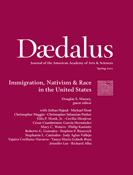By Paola Echave and Dulce Gonzalez
Latinx populations have been among those with disproportionately high rates of COVID-19 infection and mortality (Mackey et al. 2021). The factors underlying these disparities are many. One is Latinx people’s disproportionate employment in occupations with high risk for coronavirus exposure (Do and Frank 2020; Goldman et al. 2021). Others include limited access to federally funded public health insurance for immigrants and employment in occupations that do not offer paid sick leave (Glynn and Farrell 2012). But studies have not yet examined how immigration enforcement has contributed to disparities in COVID-19 mortality among Latinx populations, despite evidence that immigration enforcement affects Latinx people’s health and health care access (Capps et al. 2015; Castañeda et al. 2015).
In this study, we assess whether medium-to-high exposure to immigration enforcement between 2008 and 2017 in a given county was associated with county-level disparities in COVID-19 deaths between Latinx people and non-Latinx white people (hereafter referred to as “white people”).
We first describe our measures of COVID-19 deaths and immigration enforcement and assess the relationship between the two, overall and among Latinx-concentrated counties (i.e., those with concentrations of Latinx residents greater than 10 percent). We then describe our statistical analyses of the relationship between the number of years a county had medium-to-high exposure to immigration enforcement and Latinx-white COVID-19 death disparities, controlling for select, observable characteristics of Latinx-concentrated counties. We find the following:
Across all US counties,
white people had slightly higher COVID-19 death rates than Latinx people (350 versus 348 deaths per 100,000 people) between 2020 and 2022;
just over half of counties (56 percent) had one or more years of medium-to-high exposure to immigration enforcement between 2008 and 2017;
counties with one or more years of medium-to-high immigration-enforcement exposure were primarily located along the southern border and in the western and eastern US, and had high Latinx population concentrations and high COVID-19 death-disparity ratios; and
as the number of years of medium-to-high immigration-enforcement exposure increases, so does the Latinx-white COVID-19 disparity ratio.
Among Latinx-concentrated counties,
the majority (88 percent) showed a COVID-19 death-disparity ratio between Latinx and white people larger than 1, meaning Latinx people were more likely to die from COVID-19 than white people in those counties; and
most (71 percent) were at or above the annual average for deportations at least once between 2008 and 2017.
As the number of years a county is exposed to medium-to-high immigration enforcement increases by one, the Latinx-white COVID-19 death-disparity ratio increases by 21 percent, after controlling for counties’ key observable characteristics.
Our findings contribute to the literature by exploring how exposure to immigration enforcement over time may be related to COVID-19 death disparities for Latinx populations. Because of limitations in our data, we provide only an exploratory and descriptive snapshot of the association between immigration enforcement and COVID-19 death disparities. The results of this study, however, reinforce the importance of acknowledging the role of immigration enforcement as a social determinant of health.
Washington, DC: Urban Institute, 2024. 44p





















